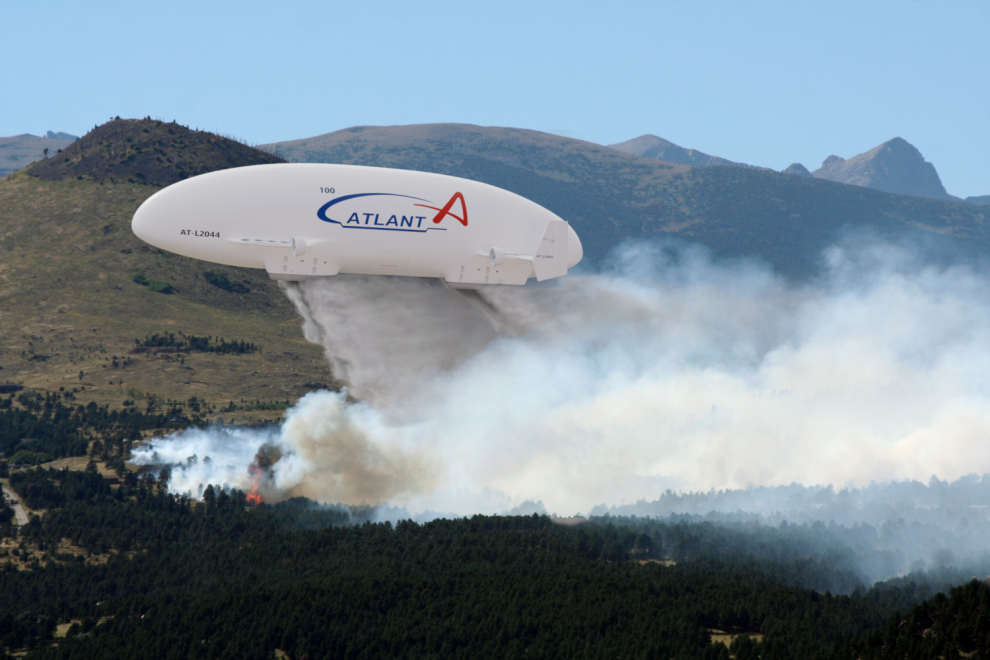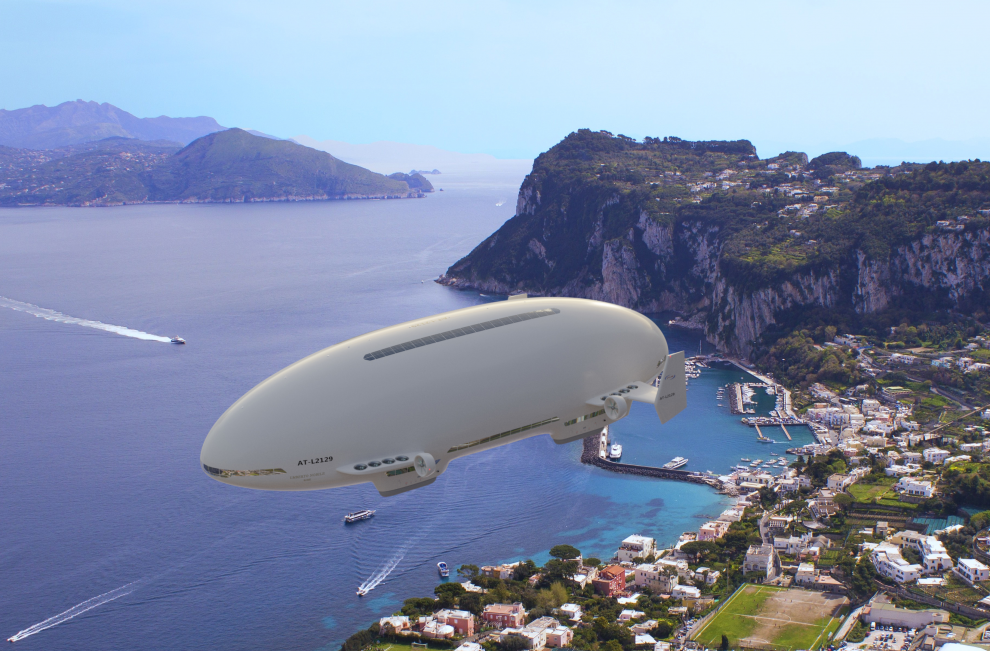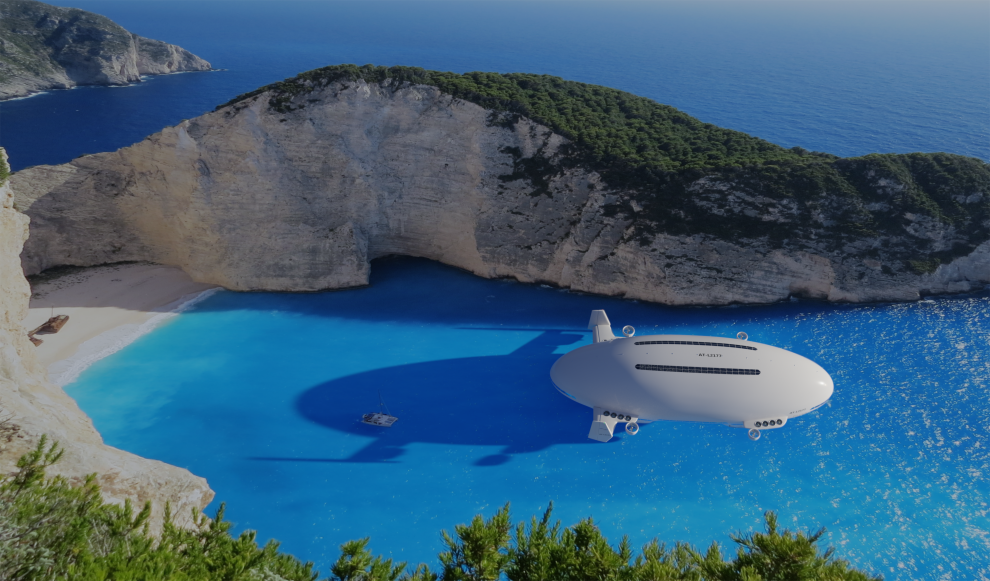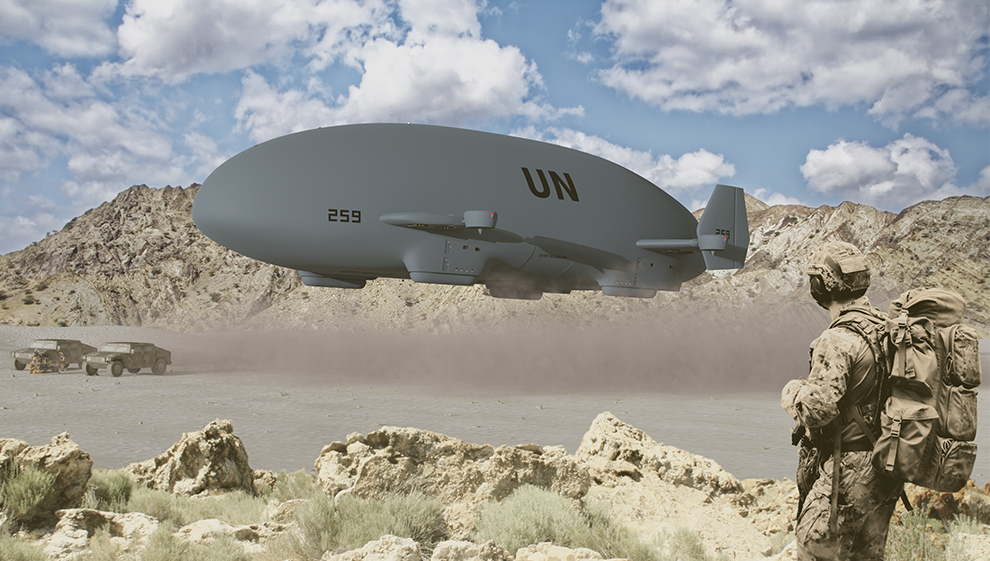ATLANT Mission
ATLANT cargo airship is an innovative transportation technology, which will open a new era in the air delivery. It is based on the unmanned hybrid cargo airship – ATLANT, capable to carry up to 165 tones to a distance of 2000 km and more. ATLANT’s ability to land vertically on almost any unprepared surface with no need for special infrastructure erases the limits in rural areas’ development. Designed to withstand the critical weather conditions in flight as well as on ground ATLANT can be used as a powerful transportation tool for all seasons in all continents. ATLANT can also provide safe, cost effective and green solution for heavy and oversized loads delivery. For passenger, emergency and special missions piloted version of ATLANT is going to be used.





Main Parameters
| Parameter | ATLANT 30 | ATLANT 100 | ATLANT 300 |
|---|---|---|---|
| Length, m | 99.0 | 140.0 | 198.0 |
| Width, m | 58.0 | 67.0 | 97.0 |
| Height, m | 23.5 | 33.4 | 47.0 |
| Total volume, cub.m. | 38 900 | 110 000 | 311 500 |
| Maximal payload, kg | 18 000 | 60 000 | 165 000 |
| Payload at the crane mode, kg | 10 000 | 30 000 | 65 000 |
| Nominal range, km | 2 000 | 2 000 | 2 000 |
| Ferry range, km | 4 000 | 4 000 | 4 000 |
| Cruise speed, km/h | 120 | 120 | 120 |
| Maximal speed, km/h | 140 | 145 | 150 |
| Hydrocarbon fuel consumption, kg/h | 295 | 590 | 1 180 |
| Cargo bay volume, cub.m | 1 100 | 2 800 | 6 100 |
| Cargo bay dimensions, LxWxH, m | 25.8x9x5 | 36.5х11х7 | 51.5х14х8.7 |
Key Technology Features
Unmanned cargo operation
High level of automation of flight controls is a key factor for unmanned cargo operation. It removes the flight endurance limitations, reduces the operational cost and eventually turns the number of aircrafts into a fully optimized AI operated cost effective autonomous cargo distribution network.

Rigid body
The rigid internal frame and hard outer panels will both be made of light weight but strong composites and can withstand any calculated load both in flight and on the ground, such as strong side winds or heavy snow. This feature makes possible the operation of the vehicle without using hangars within wide weather limits.


Buoyancy Control
An Active Ballasting System (ABC) can partially compensate for the loading and unloading of cargo by pressurizing ambient air. In flight, ABC is used for pressurizing Helium to compensate for its expansion at altitude.


VTOL Capabilities
During vertical launch and landing, dynamic lift is replaced by the propulsion system’s vertical thrust. For that purpose, we tilt the main cruise engines (MDM) and in addition use ‘multicopper’ type lifting devices (ALM) on both sides. These also make the crane mode of operation possible.


Hybrid Electric Propulsion (HEPS)
The main source of energy on board is a Dual Fuel self-Ballasting System (DFBS) consisting of diesel/turboshaft gensets (GS) and Hydrogen powered Fuel Cells (FC). Both work in parallel, satisfying power requirements during cruise flight and charging battery packs (BP) during long range autonomous flight. The BPs are intended to boost power during VTOL operations. This DFBS enhanced Hybrid Electric Propulsion System helps to save up to 35% of fossil fuel and considerably reduces both the carbon footprint and overall operational cost.


Adoptive Mooring
Equipped with four air-cushion landing systems, together with actuated multi tool anchoring systems, ATLANT will have reliable ground handling characteristics on various types of surface, including: hard runaways, soil, water (waves up to 1.5m height), ice or snow, wetlands, sands etc. The landing systems with anchors enable ATLANT to withstand strong storms (90 knots) and side winds of up to 45 knots without permanent feathering.


Hidhly Refined Shape
Both CFD analysis and wind tunnel tests have confirmed good stability and aerodynamic properties in flight as well as safe ground handling with wind from any direction without the need for permanent feathering. The lifting body helps to create additional lift in flight to compensate for static heaviness.


Use Cases
Both unmanned and manned, cargo and passenger modifications of ATLANT can be used for various purposes. Certain applications will open new and unique niches for aircrafts, some others can make ATLANTs competitive in the existing transportation networks. Please, see the most practical use cases below.

Cargo Delivery
ATLANTs’ long range cargo missions are essential for out of reach areas where most of world’s natural resources are accumulated. Using ATLANT will enable us to avoid unnecessary infrastructure construction. This is the most important environmental benefit of our technology.

Oversized Cargo
Oversized cargo always creates great difficulties for logistic companies that try to use ground transportation systems for delivery. Multimode transportation increases the cost of such a mission by over US$1.5 per t/km and the time required sometimes increases by weeks…
Its large cargo bay already gives ATLANT a lot of advantages over airplanes and most of the means of ground transportation in the carriage of oversized or low-density cargo.
But if there is a need to move even larger objects, like these 83-meter windmill blades – ATLANT is the unique solution, using its external belly tray.

Emergency Respond
Sometimes, when ground transportation infrastructure is damaged by a natural disaster, ATLANT, with its much greater capacity than any helicopter, will be the only solution to bring essential products or to evacuate suffering people. It will also serve as a flying hospital or mobile power station.

Firefighting
ATLANT can help fight forest fires or any other fire spreading across a large area. Due to its low speed, it can drop water more slowly and precisely than airplanes without damaging the trees below. ATLANT’s capability to land vertically on water and quickly refill its large tanks will make it very effective in firefighting.

High-rise Installations
The VTOL capabilities of ATLANT can be used in special Crane mode with a reduced payload for high-rise installations. The Crane mode utilizes a special rotatable lifting platform on the belly of the ATLANT to ensure that the payload is positioned precisely, while compensating for any turbulence or side wind.

Passengers Ferry Operations
The piloted version of ATLANT can serve perfectly as a high comfort passenger ferry for short and medium distances, connecting land locked places without airfields or any ground transport infrastructure. This flying ferry can also use open water, ports or harbours to connect a great number of beautiful islands or coasts, which are currently.

Luxury Sky Yachting
This will be another dimension of passenger service. Spacious apartments and saloons, full-service restaurants and bars, floor-to-ceiling windows, open decks – no existing aircraft can offer these features. This flying yacht’s ability to land practically anywhere opens a new exclusive way to explore the world.

Special Missions
ATLANT is the only transportation tool able to provide this level of air mobility. It is in a class of its own. With intercontinental range and no special requirements for the landing site at its destination, along with a comparatively modest operational cost can make ATLANT a great substitute for existing multimode supply chains for special missions.








